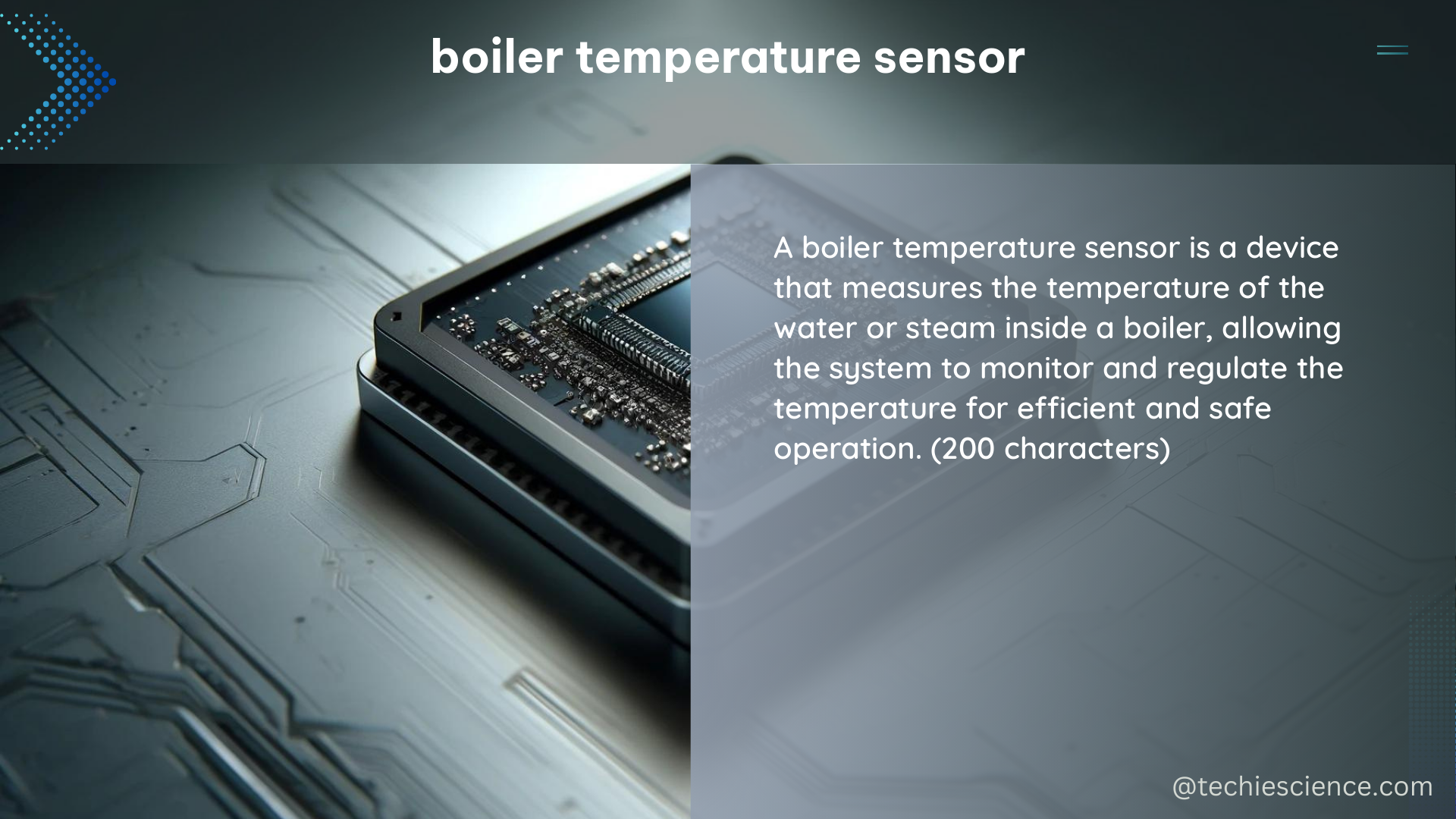The boiler temperature sensor is a critical component in any heating system, ensuring that the water or fluid inside the boiler remains at a safe and efficient temperature. Accurate temperature monitoring and control are essential to prevent overheating, which can lead to damage to the boiler and potentially dangerous situations.
Understanding the Importance of Boiler Temperature Measurement
Boiler temperature is a crucial parameter that must be closely monitored and controlled to ensure the safe and efficient operation of a heating system. Factors such as:
- Boiler Efficiency: Maintaining the optimal boiler temperature can significantly improve the overall efficiency of the heating system, leading to reduced energy consumption and lower operating costs.
- Boiler Lifespan: Overheating or underheating the boiler can accelerate the wear and tear of its components, leading to a shorter lifespan and the need for more frequent repairs or replacements.
- Safety Considerations: Uncontrolled boiler temperatures can pose serious safety risks, including the potential for boiler explosions, fire hazards, and scalding injuries.
Boiler Temperature Sensor Technologies

Boiler temperature sensors come in a variety of technologies, each with its own advantages and disadvantages. Some of the most common types include:
- Thermocouples: Thermocouples are widely used in boiler temperature monitoring due to their ruggedness, reliability, and wide temperature range. They generate a small voltage proportional to the temperature difference between the two junctions, allowing for accurate temperature measurement.
- Resistance Temperature Detectors (RTDs): RTDs use the change in electrical resistance of a metal (typically platinum) to measure temperature. They offer higher accuracy and stability compared to thermocouples, but are generally more expensive.
- Thermistors: Thermistors are temperature-sensitive resistors that exhibit a large change in resistance with a small change in temperature. They are known for their high sensitivity and fast response time, but have a more limited temperature range compared to thermocouples and RTDs.
- Infrared (IR) Sensors: Infrared temperature sensors measure the infrared radiation emitted by the boiler surface, allowing for non-contact temperature measurement. This can be useful in applications where direct contact with the boiler is not feasible or desirable.
Boiler Temperature Sensor Installation and Placement
Proper installation and placement of the boiler temperature sensor are crucial for accurate temperature measurement and reliable system performance. Consider the following factors:
- Sensor Location: The sensor should be positioned in a location that accurately represents the temperature of the boiler water or fluid. Common placement options include the boiler inlet, outlet, or within the boiler itself.
- Sensor Immersion Depth: The sensor should be installed at the appropriate depth to ensure it is measuring the temperature of the fluid, rather than the surrounding air or surface.
- Sensor Insulation: Proper insulation around the sensor can help protect it from external temperature influences and ensure accurate readings.
- Sensor Accessibility: The sensor should be easily accessible for maintenance, calibration, and replacement, if necessary.
Boiler Temperature Sensor Calibration and Maintenance
Maintaining the accuracy of the boiler temperature sensor is essential for the safe and efficient operation of the heating system. This includes:
- Calibration: Regular calibration of the temperature sensor, either by the manufacturer or a qualified technician, is necessary to ensure the sensor is providing accurate readings.
- Sensor Inspection: Visually inspect the sensor for any signs of damage, corrosion, or fouling, which can affect its performance.
- Sensor Cleaning: Periodically clean the sensor to remove any buildup of deposits or contaminants that could interfere with temperature measurement.
- Sensor Replacement: Replace the sensor if it is found to be outside the acceptable accuracy range or if it has sustained significant damage.
Boiler Temperature Sensor Integration with Control Systems
Boiler temperature sensors are often integrated with control systems to provide real-time monitoring and automated temperature regulation. This can include:
- Building Management Systems (BMS): Boiler temperature sensors can be connected to a BMS, allowing for centralized monitoring and control of the heating system.
- Programmable Logic Controllers (PLCs): PLCs can be used to process the temperature sensor data and implement advanced control algorithms to maintain the optimal boiler temperature.
- Internet of Things (IoT) Devices: Boiler temperature sensors can be integrated with IoT devices, enabling remote monitoring, data logging, and predictive maintenance capabilities.
Conclusion
The boiler temperature sensor is a critical component in any heating system, ensuring the safe and efficient operation of the boiler. By understanding the importance of accurate temperature measurement, the various sensor technologies available, and the best practices for installation, calibration, and integration, you can ensure that your boiler temperature sensor is performing at its best and contributing to the overall reliability and performance of your heating system.
References
- A fast MR-thermometry method for quantitative assessment of temperature increase in MR-conditional medical devices. https://www.ncbi.nlm.nih.gov/pmc/articles/PMC8118538/
- Temperature Measurement System. https://www.lakeshore.com/docs/default-source/temperature-catalog/lstc_appendixe_l.pdf?sfvrsn=b5177ae1_8
- Good and simple way to monitor temperature on hot pipes in central wood boiler heating system. https://community.home-assistant.io/t/good-and-simple-way-to-monitor-temperature-on-hot-pipes-in-central-wood-boiler-heating-system/426001

The lambdageeks.com Core SME Team is a group of experienced subject matter experts from diverse scientific and technical fields including Physics, Chemistry, Technology,Electronics & Electrical Engineering, Automotive, Mechanical Engineering. Our team collaborates to create high-quality, well-researched articles on a wide range of science and technology topics for the lambdageeks.com website.
All Our Senior SME are having more than 7 Years of experience in the respective fields . They are either Working Industry Professionals or assocaited With different Universities. Refer Our Authors Page to get to know About our Core SMEs.